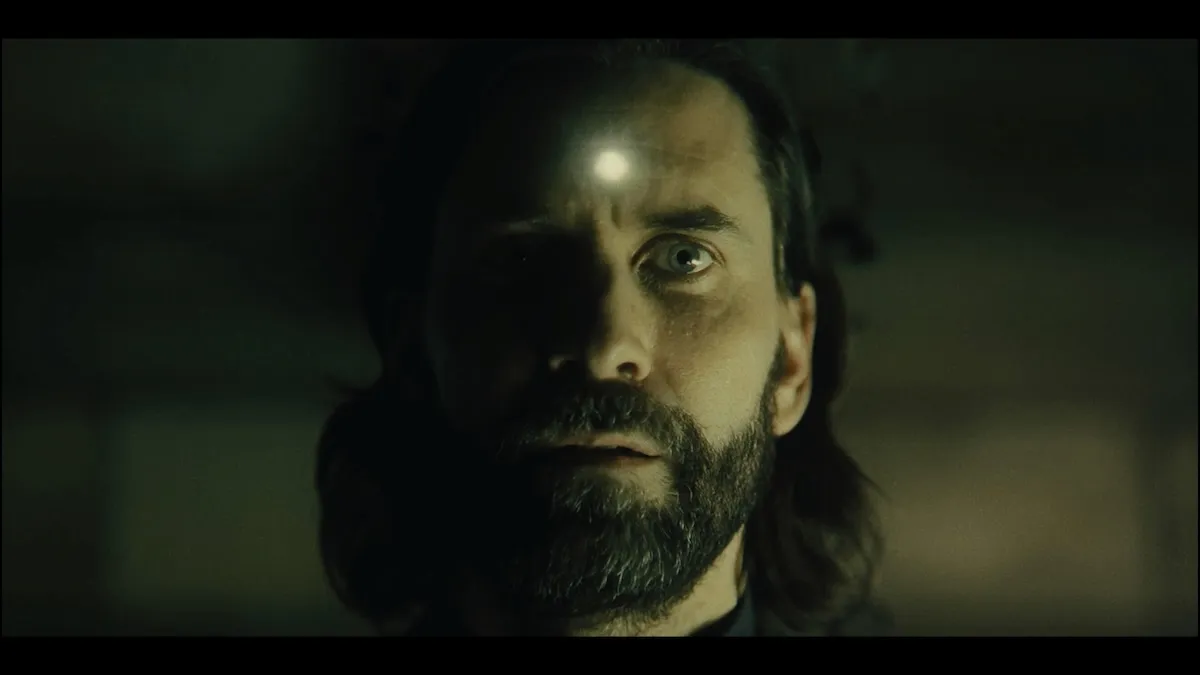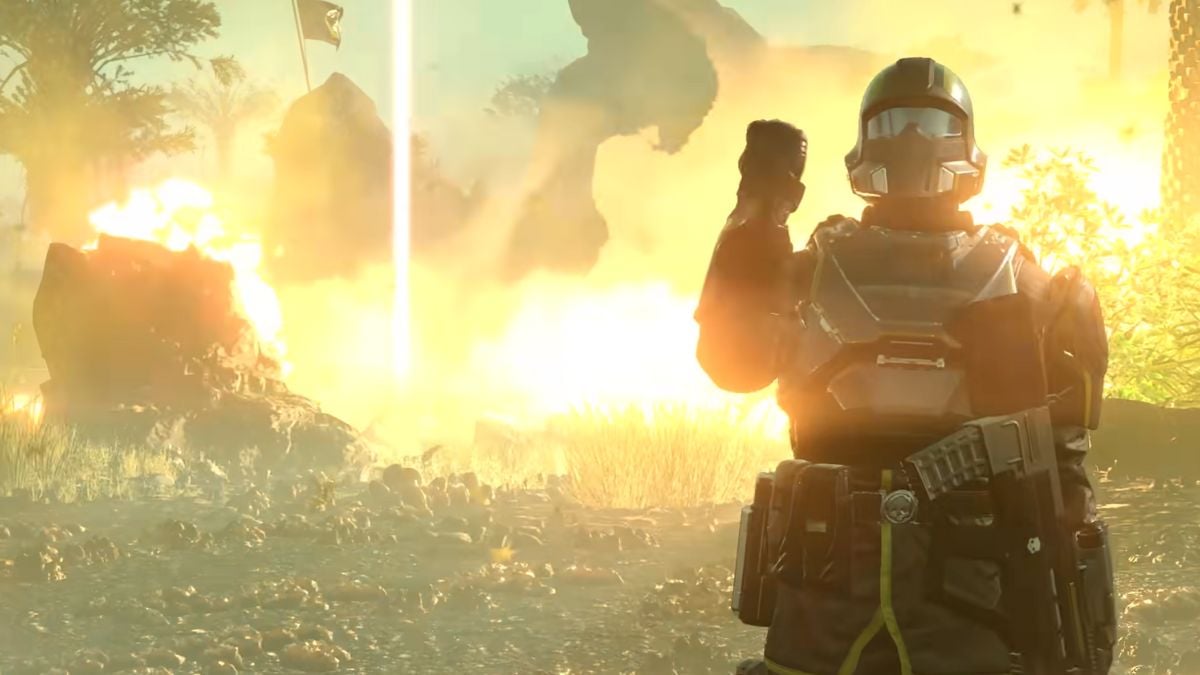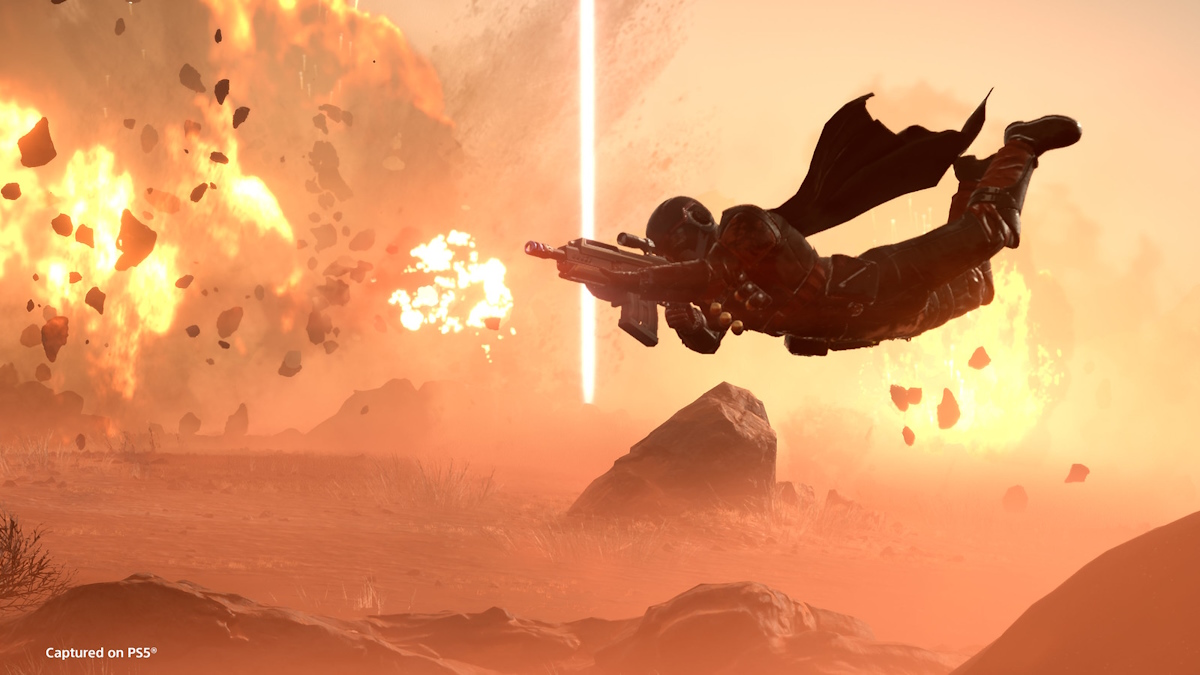If there is one thing that I have learned in my existence on this planet, it’s that large robots can crush things. Furthermore, crushing objects, places, and people is a relatively enjoyable experience for the person driving, operating, or controlling the large robot. That’s why I was drawn to Armored Core: For Answer.
Of course, being drawn to something doesn’t always necessitate enjoying it — and that is perhaps the largest drawback of the latest AC title. One wishes that breaking stuff and shooting things with a large robot could always be hapless fun, perhaps even mind-numbing. The developer of For Answer, From Software, probably understands that there is a driving force behind their games. This force would be that animalistic desire to destroy.
I won’t get into specifics quite yet (you’ll have to hit the break for that), but I would love to take this opportunity to talk about my desire to be a mathematician. Ever since I read Jurassic Park, I’ve been enraptured with the idea of wearing tight leather pants, getting my leg ripped up by a T-Rex, and babbling about lifting up dinosaurs’ skirts. I really have no basis for this past this desire, or any mathematical talent. I just wanted to tell you guys.
Hit the break for a full review of Armored Core: For Answer.

Armored Core: For Answer (Xbox 360, PlayStation 3 [reviewed)
Developed by From Software
Published by Ubisoft and From Software
Released on September 16, 2008
Like we established in the introductory phase of this review, large robots can crush things. In the end, that’s really all Armored Core: For Answer breaks down to. The storyline gives the first hint that the only element of the game that seems exciting initially is really the only exciting element, period. In For Answer’s crazy mech-filled future, the Earth has been ravaged. Cities exist in magical bubbles in the skies and mega-corporations control everything inside and outside those bulbous walls.
Of course, these corporations aren’t Coca-Cola. They’re evil companies who use large machines to their advantage. At the beginning of the game, the player chooses a base mech designed by one of the four mega-corporations. Apparently, the character you control is a mercenary who likes to shop around for machinery. Why you’re fighting and where you’re fighting isn’t necessarily made clear. The story is conveyed by a series of machines brought about by menus in which a voice over the speakers attempts to relate to you the parameters and loosely say what the conflict is all about. In the end, players will find the loose-knit and poorly conveyed story extremely dissatisfactory.
Yet, who cares about story as long as stuff gets blown up, right? That’s totally what For Answer would love players to latch on to. The only problem is that everything about the gameplay is sketchy, loose, or dumb.

Thankfully, the mechs in Armored Core don’t just shamble and knock into stuff. They can fly via boosters, skid around on the ground, and also go for light swims (while still standing). The booster is the mechanic that allows evasion from the enemy attacks. Most enemies are smaller mechs, tanks, and various turrets designed to kick down armor and ultimately end the game for the player. It also serves as a defensive weapon by tossing out a huge blue ball of destruction; the problem is that getting that ball to launch is a bit touchy. For Answer doesn’t really answer button pushes too well. There are also sections of the game when mechs are launched into battle on really fast rockets. These portions are premised on using the boosts effectively to avoid incoming missiles while flying at high speeds. These pieces of the game are actually fairly well done and fun to mess around with. It’s when landing and shooting that the issues really come to bear.
Mechs have multiple guns, each handled with separate button presses. The aiming apparatus has a lock-on for most weapons, which makes the frantic style of play in For Answer much more navigable. In Order matches, players will meet the bigger enemies (other mechs) in the game. These guys fly around as if the pilot is huffing paint in the cockpit. Chasing these dudes around sounds exciting, but is about as awesome as listening to a didactic interpretation of Homer’s Odyssey. And there’s a worse scenario underfoot. After chasing these guys around for more than a minute (or even longer in larger levels), players will find that they’re out of ammo. If much more of the conflict is left, or enemies are at a distance, then players might as well hit the “replay mission” option in the menu. There aren’t ammo boxes or health refills available in the game. Quite often players will find themselves (especially in larger conflicts) strapped for ammo and unable to actually play. There are energy swords (think Halo, but with robots) that players can utilize, but the problem is that the lock-on with these things is sub-par at best. Also, they’re useless against anything that moves quickly, or one of the massive gunships sprinkled throughout the experience.
The levels are divided into ADHD chunks. The majority of them are between two and three minutes long, with a brief introduction by some asshole who has the mission parameters. After completion of a mission, players will earn money, with which they can customize their mech. The decisions are vast, but specific. Everything that can be seen on the mech can be customized — as well as its balance, shields, and antennae. While buying new guns and armor is always a great deal, the game rarely grants enough money to buy all of the new unlocked stuff. It often takes time, and as the levels scale, players will find themselves at a massive disadvantage. To make things worse, the game penalizes players for taking damage or going too slowly in missions. It literally docks them earnings, which means less armor and guns, which directly translates to a poor gameplay experience.

That’s not to say that the customization is particularly a bad thing. It’s brilliant if one is really into making the best mech possible. It’s basically like being a roster nerd in Madden, except with robots.
There is also another massive drawback besides the odd action elements. The camera in For Answer is schizophrenic at best and will often hinder more than help. Players will find themselves wrangling with it more than actually fighting enemies. For some reason, some developers have yet to figure out that camera position is extremely important.
For Answer’s multiplayer component is almost non-existent, simply because of a lack of players. The objective of the competitive multiplayer is to kill other players’ mechs. These are much like the Order Matches found in the single-player game, but instead of paint-snuffing A.I. constructs, players will be pitted against each other in frantic battle. The mode supports up to eight people (haven’t seen that yet) and is offered in both ranked and free fashion. The matches are usually short, boring, and largely unrewarding. At the very least, For Answer should award players for making their mechs look cool.
There is a cooperative component as well, but it can only be initiated online. This one really hurts — especially considering the game has split-screen competitive play. Once again, the lack of players severely restricts this mode, but from the little gameplay to be observed, it seems to function fine and load smoothly. It’s basically the Story mode, but restricted to what levels the host has played in the single-player campaign.
The visuals in For Answer are decent, but definitely lower quality than what is to be expected of a next-generation title. The water effects are bland and the textures on buildings are absolutely horrid. The mechs show through quite well, but it’s disturbing to see levels that are so underpopulated by objects that still look terrible. The explosions and particle effects look and sound amazing, which is probably the real redeemable factor.
In summary, Armored Core: For Answer is a bland game that only exhibits brief periods of satisfaction, namely blowing things up, amidst its numerous flaws. For Answer has some particularly testy controls, poor mission structure, aggravating battles, and a complete lack of flair in its levels. It doesn’t help that the game looks particularly unpolished as well. Perhaps it will be awhile before a developer takes large robots that can crush things to the next level. We’re eagerly awaiting that day, but For Answer definitely isn’t the answer to all of a player’s robot needs.
Score: 3 — Poor (3s went wrong somewhere along the line. The original idea might have promise, but in practice the game has failed. Threatens to be interesting sometimes, but rarely.)





